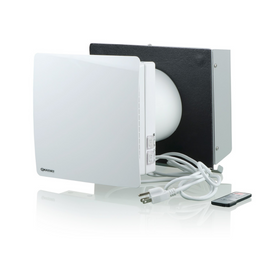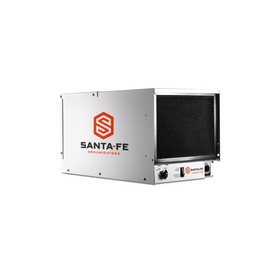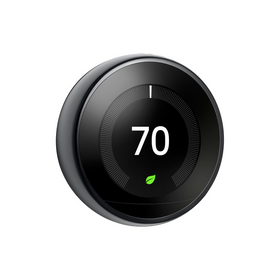- Home

This new urban strategy located in the midst of one of North America's most nature-friendly metropolitan areas that is also bathed in a generous amount of year-round sunlight is founded on the goal of net-zero energy. Every one of the homes built in the Geos Neighborhood is fully equipped with a rooftop PV system of at least 3.5 kW to be able to power homes and charge at least one electrical vehicle. Homes are specifically designed with maximum solar orientation in mind while state-of-the-art ventilation strategies maintain superior interior air quality. The advanced building technologies focused on passive house standards for housing envelopes and mechanical systems maximize the energy efficiency of the structure.
Homes are to be limited in size ranging between 700 and 2,800 square feet, making it easier to meet their energy needs with renewable energy systems. The high-performance shell is well insulated with walls achieving an R-30 rating, while roofs increase to an impressive R-50 rating.

On average, the heating, cooling, and ventilation energy use of homes in the Geos neighborhood is about 25% of comparable new home construction. Thus, these townhomes will use an average of 75% less energy than certified Energy Star homes. Whereas the average home across the country uses 10,766 kWh per year, these townhomes are designed to use only 2,000 kWh of electricity even though they are located in a region with cold winters.
In the shared green areas, rainwater collection systems are planned to fully irrigate community parks, gardens planted in native vegetation, edible landscapes, and community farms that are a special shared resource of the neighborhood. Part of the new urbanism strategy focuses on limiting reliance on personal vehicles, and a network of pedestrian and bike paths connect the small village which includes a park, play areas for children, a unique central town square, and other important neighborhood services designed for urban density.
The old fruit orchards native to the region that have disappeared due to urban sprawl will be replanted. While still in development, the idea is for each street in the community to grow a different variety of fruit trees that will be managed by a community agriculture co-op. Space for community composting systems will help to divert large amounts of organic waste from landfills while limiting landfill gas emissions and providing a source of natural fertility for the community farming operation.

Unlike other exclusive “green” neighborhoods that are priced to exclude large segments of the populations, the cost of houses in the Geos Neighborhood is competitively priced with traditionally built homes that don’t include all of the added benefits. A condo in the New Geos neighborhood starts at $225,000 while a single-family home begins at $575,000.
Energy Saving Products for the Home
Shop home improvement products that help save and conserve energy (power) in your home.

Vents TwinFresh Comfo RA1-50-2 Ductless Energy Recovery Ventilator
Vents
In Stock

AFM Safecoat Almighty Adhesive Case of 12
AFM Safecoat
In Stock

Emporia Level 2 48 AMP EV Charger UL Listed
Emporia
In Stock
2 Colors

Stiebel Eltron CON 300-2 Premium Wall-Mounted Convection Heater - 202030
Stiebel Eltron
In Stock

Stiebel Eltron Accelera 300 E Heat Pump Water Heater
Stiebel Eltron
In Stock

Santa Fe Compact70 A2L Dehumidifier
Santa Fe
In Stock

AFM Safecoat 3 in 1 Adhesive
AFM Safecoat
In Stock

QuickBOLT QB2 with Microflashing Multi Roof Mount Solar Panel Fastener Kit
QuickBOLT
In Stock

Google Nest Learning Thermostat
In Stock
6 Colors

Stiebel Eltron DHC-E 8/10-2 Plus Point-of-Use Electric Tankless Water Heater - 202145
Stiebel Eltron
In Stock

According to architect Michael Tavel, who along with landscape architect David Kahn and developer Norbert Klebl has been involved in the development of the Geos Neighborhood, maintaining home affordability has been a major goal of the project. Tavel states that “we are trying very hard to make this affordable, and one of the ways…is to have smaller, more compact homes just to save resources and it makes them more smart and efficient.”
He goes on to say that the “additional costs for green construction get folded into a mortgage where the interest is tax-deductible. This, combined with lower utility bills, leads to a net-zero energy home that costs no more to own than an ordinary home of the same size.”
The contractor also offers several other housing options, including alley houses, live/work urban double homes, solar cottages, row homes, workspace townhouses, and others.

The 1,810 finished square feet includes three bedrooms and two full bathrooms on three floors. The first floor is a garage and flex space with an included half bath that could be turned into an extra guest space, home office, studio, game room, or hobby area.
Tobias Roberts
Tobias runs an agroecology farm and a natural building collective in the mountains of El Salvador. He specializes in earthen construction methods and uses permaculture design methods to integrate structures into the sustainability of the landscape.







